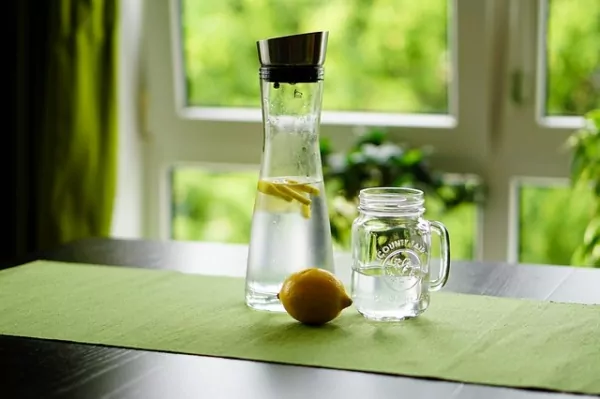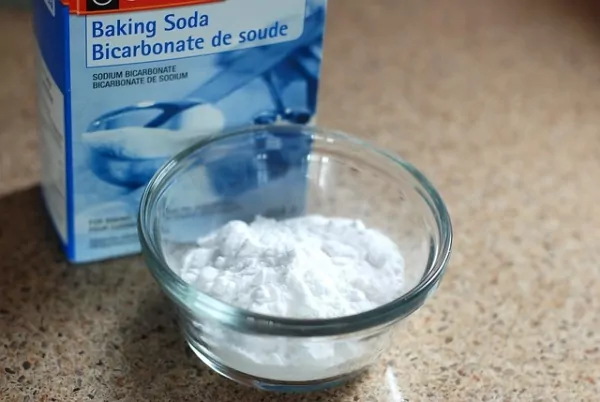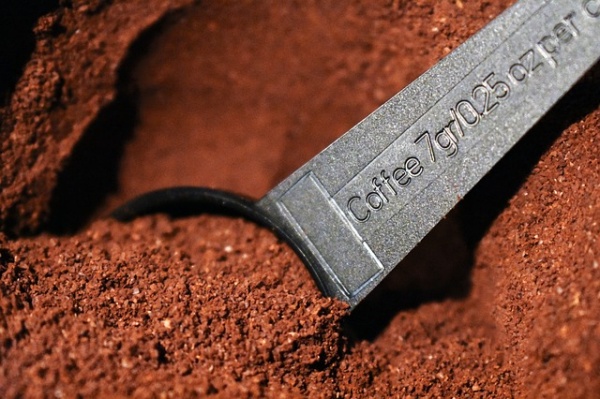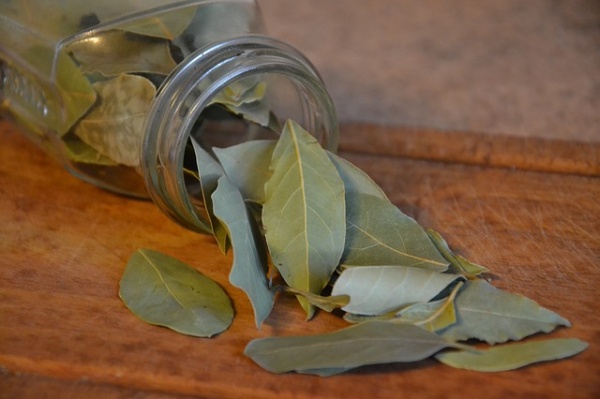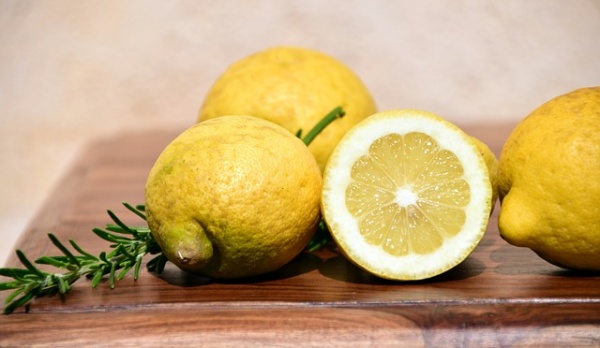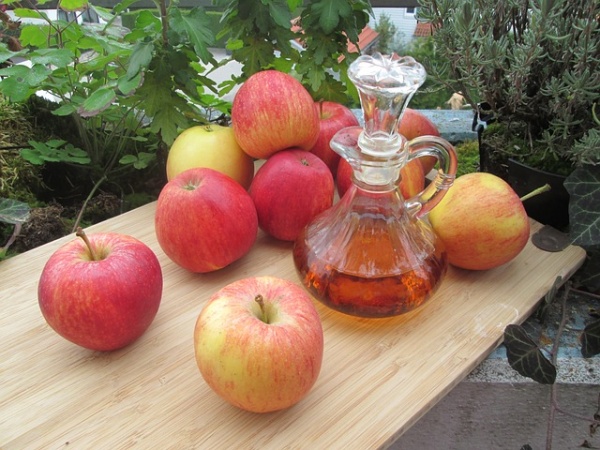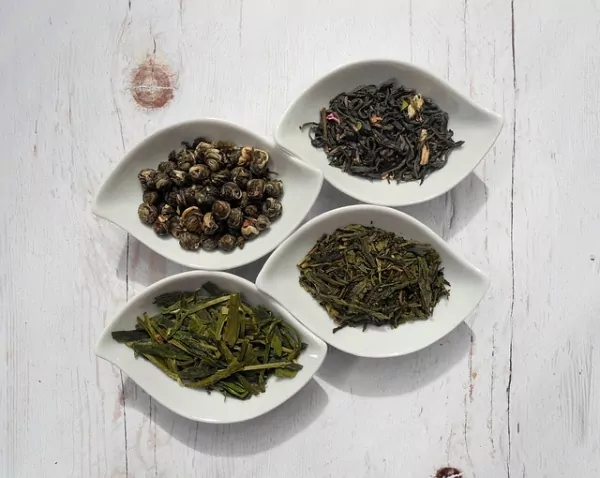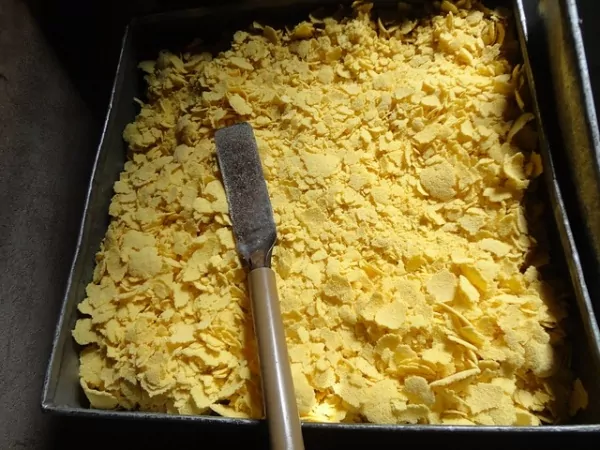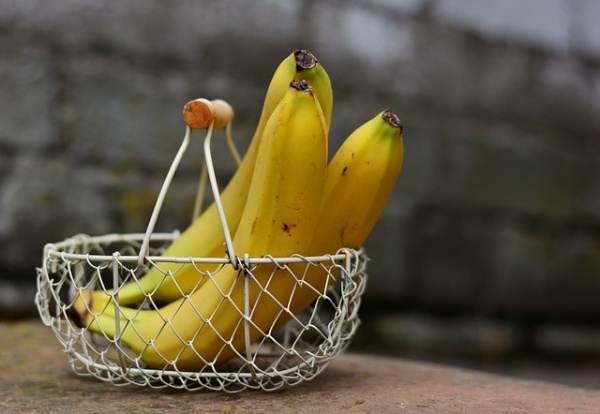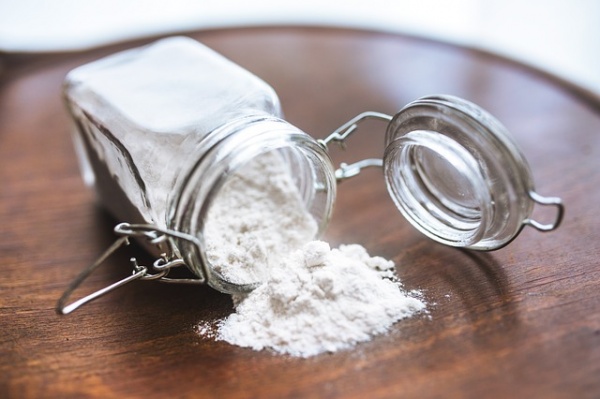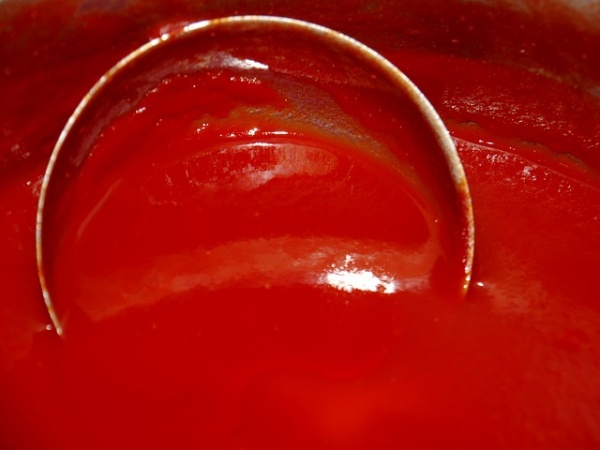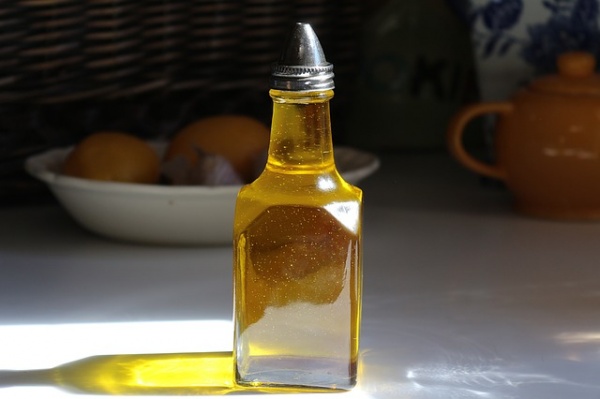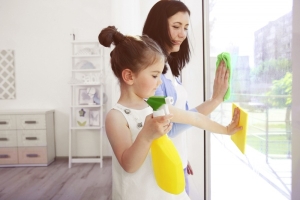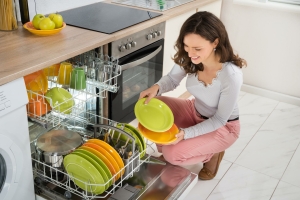15 Foods You Can Use Around the House
Ah, food, glorious food. If you are not in our stomachs or getting eyed scandalously on Instagram, what are you good for? Turns out, food has a lot more uses than just consumption. Outside of the kitchen, there are ways to get more out of your groceries than you may have thought possible. This saves you money but also saves the planet, because everything is natural.
1 Baking soda
Funny thing, before I knew baking soda was actually used for baking…I thought it was solely a cleaning product. I was legitimately appalled when I saw someone pour the very baking soda my mother used for tile cleaning into a cake recipe.So, yes, baking soda has a bounty of uses. The first is indeed to bring out the shine of tiles. Simply take two gallons of water and half a cup of baking soda. From there, scrub the tiles with the solution. Easy cleaning.
Another use for baking soda is for unclogging sinks and drains. Pour some baking soda into the drain after removing the cover. Then take some regular vinegar. The fizzing will work down into the drain to help break up whatever is clogging it.
Other uses for baking soda include:
- Exfoliation. Mix 3 parts baking soda and 1 part water then rub in a gentle circular motion across the skin. Wash off and be wowed.
- Relieve skin irritation. Adding baking soda to bathwater will soften the skin and ease irritations, like insect bites, burns, and more. This also comes in handy for when your baby has diaper rash.
- Deodorizer. This is probably the most famous use for baking soda. Simply sprinkle around the house and let it sit before vacuuming or sweeping up to get rid of lingering odors. You can even put an entire box in the refrigerator for several months to absorb odors that would otherwise affect the flavors of the stored food. This also works in trash cans, cutting boards, litter boxes, toilet bowls, and anything else that gets rank.
2 Coffee grounds
Never, ever throw away your used coffee grounds. There are so many uses for them aside from going to waste in the garbage can.- In the garden. For those with gardens, coffee has more than one use. You can sprinkle coffee grounds around your plants to protect them from ants, snails, slugs, and more. And if you mix coffee grounds with rosemary oil or orange peel, small mammals will also be driven away. Second, coffee grounds are wonderful for fertilizing certain plants, like azaleas, hydrangeas, camellias, roses, and other acid-loving plants. Just remember to add lime or wood ash to the mix so that you get a complete fertilizer for fruiting and blooms.
- Food odors. Coffee grounds are can used like baking soda for absorbing those foul smells around the kitchen or in the refrigerator. Simply put a small container filled with used coffee grounds in the back of the fridge. One can will last about two weeks. Once used, you can toss those grounds into your compost heap.
- Exfoliate. Add grounds to warm water and your favorite oil, like coconut oil, then scrub your skin. An easy, all-natural way to a beautiful complexion.
- Caffeinated soap. Fun fact: caffeine can be absorbed through the skin. You can actually use those old coffee grounds in a homemade soap recipe to give you a refreshing morning boost before heading off to work or class. Plus, you will smell like an early Starbucks. What’s not to love?
- Healthier hair. If you recently switched to a natural shampoo and conditioner, you may find there’s something weighing down your hair. Once a month, use some coffee grounds before shampooing and massage into your scalp. The course texture will break up residue without damaging your locks.
3 Bay leaf
The Greeks and Romans believed that the bay leaf symbolizes wisdom, peace, and protection. Yet, for many nowadays, the bay leaf is a gateway to delicious cooking and other health benefits. Aside from livening up a dish, you can use bay leaves for fighting colds and inflammation using bay leaf tea. Oil extracted from bay leaf can be rubbed topically on sprains, strains, arthritis, and even for migraines and headaches.- Pearly whites. Looking for brighter teeth? Brush them with powdered bay leaves once every 3 days alongside other brightening and whitening formulas for maximum effect.
- Insect repellent. Bay leaves contain lauric acid, a known insect repellent. Simply leaving out a dish can ward off bugs.
- Bug bites. Make a paste out of crushed bay leaves and oil then rub on itchy or stinging bug bites to relieve them immediately. Water boiled with bay leaves is also good for ridding the head of lice.
- Anti-fungal and antibacterial. Have a bruise, bite (aside from bugs), scratch, or other skin infection? Aside from getting medical care, which is always necessary when you have a bad infection, you can use bay leaf oil for its anti-fungal and antibacterial properties to aid in healing open injuries. Simply apply topically.
4 Lemon
Did you know that homemade lemonade (without a ton of sugar) is an excellent way of fending off bacteria and viruses that could make you sick? Lemon and honey is also great for aching throats. But aside from use as food, lemon has a reputation for appearing in household cleaners and the like for its astringent properties.- Polish. Brass, stainless steel, and copper can all be polished with some lemon juice and other ingredients. For example, you can use lemon juice and cream of tartar to brighten copper and brass. A quick wash of lemon juice and salt will remove tarnishing and other grime from stainless steel.
- Laundry detergent. White clothing gets stained easily. Luckily, with a little lemon and baking soda or vinegar, you can brighten them and remove things like underarm stains, ink spots, and much more with one wash.
- Dish detergent. Add a tablespoon of lemon to your dishwasher detergent to a streak free shine.
- Mosquito repellent. Being that lemon oil is a natural insecticide, grab some juice and rind and rub it around windows and baseboards. This will keep bugs, mainly mosquitoes, at bay. You can even rub so essential oil on your wrists in the summertime so you don’t get eaten alive.
5 Vinegar
There is a lot of vinegar products out there from different sources, yet they all more or less function the same when used as a household product or in cosmetics. I am sure by now most people have heard about the astounding benefits of apple cider vinegar.Aside from using it on salads and for tenderizing meat, my family has always used it as skincare and also on animals to ward off ticks and sand fleas in the summertime.
- Apple cider vinegar toner. If you have some apple cider vinegar, I recommend using it to improve your complexion. Mix it with water then dab it onto your skin, especially where pores are enlarged. As it dries, it will tighten those pores.
- Hair cleaner. Another use for apple cider vinegar or clear, white vinegar is to swap it with your conditioner about twice a month. Sometimes, our hair gets a nasty build-up around the roots that weigh it down or make it look dull. Vinegar, however, will wash that all away and boost silkiness and shine. Just don’t go overboard, or your hair will get dried out.
Read also – 7 Diet Changes to Fix Your Biggest Digestive Woes
6 Green tea
This beverage has been around for thousands of years and has gained quite a following since then. Green tea also has a host of health benefits. But there is more to green tea than drinking and mixing into pastries. Here are some surprising ways to make use of all that green tea you have:- Reduce eye puffiness. Those tannins and caffeine found in green tea helps reduce dark circles and puffiness under the eyes. Brew up two bags of green tea then take out those bags, squeeze them gently to remove the water, and (when cooled) place those bags over your eyes for 10 minutes. The best part is that you have tea to sip while you relax. Or you can use that tea for an aromatic foot soak!
- Sunburn soother. Green tea has properties that aid in reducing inflammation. Since sunburn is literally inflamed skin, soak a piece of cloth in cooled green tea then apply to the affected area. You will feel better.
- Odor fighting. Put dry, unused green tea bags in the refrigerator, trash receptacle, near litter boxes, or even in your underwear drawer to fight odors.
- Cleaner. A used tea bag is a stellar DIY sponge for greasy dishes, as the tannins lift the grease away from the dish or pan. This also works on mirrors and toilet bowls. You can also clean your yoga mat with green tea and water. For carpets, sprinkle used (and dried) green tea leaves across it then wait for several minutes before vacuuming them up. There will be a pleasant smell afterwards, and you will have picked up more grime.
- Plant watering. Take a used and dried tea bag and place it at the bottom of a plant pot. The tea bag will absorb excess moisture over time and simultaneously redistribute moisture more efficiently than just using straight soil and dirt.
Pro tip: Store your green tea in the fridge so that the leaves don’t spoil!
7 Bread
Aside from filling you up and forming the base of a sandwich, bread is a practical tool that can save you time and money. Here are some bread hacks to try the next time you find yourself stuck with a stale loaf:- House cleaner. Bread is a stain remover. How? Simply roll the white center into a ball to make a gooey sponge. The gluten in the bread absorbs dirt and other grime that clings to walls, cupboards, countertops and, yes, even old oil paintings that have gotten dingier throughout the years. You will notice smudges and greasy fingerprints just disappear. Keep in mind that white or rye bread works best for this – it must have gluten.
- Marshmallows. Stale marshmallows are about as much of a bummer as stale bread. Fortunately, if you have bread butt hanging around that no one wants, you can use that to rejuvenate your marshmallows. Place the bread slice in the plastic bag for a couple of days. The marshmallows will absorb the bread’s fluff.
- Splinter removal. Never use tweezers again with this fix. Wet a piece of white bread with hot water and place it over the injured section of skin. Tie a handkerchief or something similar over the bread to hold it in place and wait for the slice of bread to go cold. Overtime, the bread will soften your skin and draw out the splinter or shard of glass. Unfortunately, if it does not work completely, you may still need to reach for that tweezer…
- Corn removal. To treat toe corns, place a piece of bread that has been soaked in apple cider vinegar to the affected region. Tape the bread in place or wrap it, cover it with a sock, or whatever works, and leave it on overnight. Going to bed with a piece of bread on your foot might sound silly, but do not knock it till you’ve tried it.
8 Corn starch
When I was younger, another food ingredient I was confused by was corn starch, since I was used to seeing it shaken into shoes and rubbed on skin. Then my grandmother used it on chicken and the world was flipped upside down.Corn starch is like baby powder but without the sometimes irritating talc. You can combine it with a pleasant smelling herb, like dried rosemary, sage, or lavender and pulse it together in a processor.
Then transfer the mix to a container with a shake top and use it to freshen up the inside of smelly sneakers or use it after a shower to keep you feeling and smelling nice.
Other uses include:
- Skin relief. Sunburns and other reactions can be soothed with an easy mixture of 3 tablespoons cornstarch and cold water. Apply the paste to a pad or cotton ball, let dry, and later remove with a warm water wash.
- Oil stain remover. Oily spills and smears on clothing and other materials can be a pain to remove – but not with corn starch. Sprinkle a generous amount on the stain and let it sit for a couple of hours to draw out with moisture. Then go about with your usual cleaning ritual.
- Untangle knots. Some knots in rope or string are impossible…until you sprinkle cornstarch on them. The cornstarch will reduce the friction between the rope fibers to make untying the knot easier.
- Homemade paint. Though it is not permanent, if you want to make homemade finger paint or face paint, simply boil corn starch in water, add some food coloring, and boom! Water colors. For face point, it is recommended to use vegetable shortening.
9 Banana
Oh, bananas. These fruits are amazing. Not only are they good for the body, but they are superstars in health, beauty, and around the household.- Wart removal. The potassium in banana peels has been prized by many cultures as a way to remove warts. Simply take a small part of the banana peel and some duct tape and place it over the affected area. Depending on how big the wart is, you may need a bigger piece of peel to cover it entirely. Cover the wart entirely, leaving on for as long as possible. Even by the end of the first day, you may notice improvement.
- Whiten teeth. Rub banana peel on your teeth for about two minutes before brushing your teeth. It is not an immediate effect, but you will begin to notice a difference after a week.
- Bug bites. You can also alleviate bug bites by rubbing some banana peel over them.
10 Milk
The debate of whether or not milk is healthy for people continues to rage on. With the dairy source being rich in proteins and other useful nutrients, it not only packs a nutritional punch but has compounds that make it excellent for around the house.- Defrosting. When defrosting something frozen, like fish, put the filets in a shallow plate or bowl of milk. The liquid will actually make the fish taste fresher and reduce the amount of time it takes to thaw.
- Crack repair. Have fine china with cracks? Put the objects with hairline cracks in a covered pot or pan of milk and bring it to a boil. Once you have a boil, reduce the heat to a simmer for about 45 minutes. The cracks will disappear.
- Powdered milk power. Mix two parts water with one part powdered milk with a pinch salt. You will get a milky paste that can be applied to the face for a facial or to sunburns and bug bites for quick relief from itching and pain. Powdered milk also works as a makeup remover.
- Drain cleaner. In the event you have soured milk, you don’t have to merely pour it down the drain…but by all means, pour it down the drain. The fermentation will actually clean your septic tank. Or, use the milk to clean tarnished silverware by letting it soak for 30 minutes. Then wash off the milk with soap and water for shiny silverware.
Read also – 7 Tips to Simplify Your Summer Cooking Life
11 Flour
An essential ingredient in baking just became much more useful. Though you can use really any time of flour, the all-purpose kind is going to do a lot more around the house than rise in the oven.- Make play dough and cloud dough. Regular store-bought clay and cloud dough is laced with all kinds of nasty chemicals. Instead, make a cheaper and more natural alternative. For play dough, take 2 cups of flour and 2 cups warm water, 1 cup salt, and 2 tablespoons vegetable oil. You can add cream of tartar to increase elasticity, and food coloring allows you to make different colored dough. Store the dough in an airtight bag to be used again and again. Cloud dough is a little different, and much lighter: take 8 cups of flour and mix with 1 cup baby oil.
- Clean a deck of cards. Drop your dirty deck of cards into a paper bag with a quarter cup of flour. The particles will soak up dirt and grease from the cards so they come out sparkling clean.
- Deter ants. Ants can be kept at bay by sprinkling flour wherever they enter or exit your house. Sometimes it works, sometimes it doesn’t, but most ants won’t cross the barrier because they can’t lay a chemical trail over it.
- Natural pest control. Here is another pest control tip for your garden: sprinkle your pumpkin and potato plants with a fine flour to keep bugs off the leaves and blossoms. This will keep your crops healthier.
- Metal cleaner. You can buff metals with flour! For steel, add dry flour to a cloth rag and rub. That’s it. Wash it off when you’re done to admire the new shine. For copper, make a mixture of equal parts flour, salt, and white vinegar. Apply the paste to the copper, let it dry, then rub it off. The copper will look like new.
12. Salt
So your doctor told you to lay off the salt but you just bought a huge container of sea salt from Trader Joe’s. What now? Well, your salt will not go to waste.Instead, use salt to clean cast-iron pans. Take 2 tablespoons of oil (vegetable or olive oil), poured onto the cast-iron pan, and turn on medium heat. Once the pain has been heated, pour on 3 tablespoons of salt.
The heat will remain the same, so take some tongs and hold something that will scour the pan until clean. Remove from heat, let cool before rinsing, and then once again coat the pain in oil to cure. Ta-da!
And for wine drinkers, here is a usual tip: if you have a fresh stain, pour some salt on it and let it sit for a while. Then pour boiling water onto the stain from above 6 inches above. Let the clothing sit as it dries, and you will notice the stain gradually disappears.
13 Olive oil
When it comes to the all-star olive oil, everyone loves a good “virgin,” eh? After all, EVOO has polyphenols and monounsaturated fats to keep your skin and organs operating well. Turns out, those very oils and fats give olive oil a breadth of uses beyond its common uses in cooking. Here are some other ways to use olive oil:- Lubricant. Ever spill olive oil on the floor? Good luck not slipping and sliding around for the next couple of days! Anywhere you would use WD-40 lube, like on squeaky door hinges and whatnot, you can use olive oil.
- Polish. After cleaning silverware, copperware, and other metals, rub some EVOO over the metal to prevent tarnishing and streaks. You can also use olive oil and one part lemon juice to wipe down wood furniture. If you have dry leather, rub some olive oil over it and let it sit for about 30 minutes. Suppleness will return to the leather, making it useable again!
- Snoring. Know a noisy sleeper? Have them take a shot of olive oil before going to bed. The oil will lubricate their throat, softening the sound of those muscles vibrating when they snore.
- Beauty care. Dry skin and frizzy hair usually come down to the absence of one thing: moisture. Use a little olive oil either on your scalp or applied directly to the skin (face or body) for softer, enriched skin and hair.
14 Ketchup
Everyone’s favorite condiment for fried food just got a whole lot more endearing. Ketchup has way more uses than just jazzing up what’s on your plate.- Goodbye green. Green highlights, that is. Ever go into a pool after dying your hair and come out looking like the Joker? The red in tomatoes will actually neutralize the green highlights. Simply leave the ketchup in for 5 minutes then wash your hair normally.
- Wax on, ketchup off. Car polish is needlessly expensive. So instead use ketchup to remove the tarnish from car parts. Note: this will also work for silver and copper (just add kosher salt)! The only thing you need to remember is that you have to wash your car appropriately afterwards, because ketchup, sadly, doesn’t remove dirt.
- Bad scents be gone. In the UK, the scent of a fox is much like a skunk. How do people get rid of that funky smell? They soak garments in ketchup for about an hour or sometimes longer. Don’t worry, your clothes will not be dyed red… and they will smell better.
15 Vegetable oil
Though vegetable oil often gets a bad rap for being a health concern, using it time to time is not going to kill you. In fact, using vegetable oil in your day-to-day activities, like cleaning, can make your routine more productive and less painless.In the kitchen, skip using vegetable oil in your recipes and try EVOO instead. Rather, use it for undoing sticky lids from honey, syrup, and the like. Or, add a light coat of vegetable oil to the inside of measuring cup or spoon to keep other sticky ingredients from, well, sticking.
This will also work with grating cheese. Simply coat the grater in vegetable oil then grate as normally. Cheese won’t cling or clog the grater, meaning you will get done much faster.
Other ways to use vegetable oil around the house include:
- Hair treatment. Heat a cup of vegetable oil in the microwave for about 10-15 seconds. Massage the oil into your scalp while your hair is dry then place a shower cap over your head. Let it sit for about 20 minutes. Shampoo your hair normally and luxuriate in the softness afterwards.
- Fix zippers. The stuck zipper is frustrating and heart-breaking. But this doesn’t mean the end of your clothing. Take a dab of vegetable oil and paint the zipper. Keep trying to unzip the stuck teeth, applying more oil as needed. Eventually, it should come undone.
- Label removal. Wanting to reuse your old jars is a grand idea for saving money and other DIY projects. However, not all of us want those old labels sticking around. Put some vegetable oil on the label, let it sit for a while, then rub or peel off. It will be so much easier.
- Bird bath. A common complaint about bird baths is that they attract more mosquitoes than birds. So here is what you do: add some vegetable oil to the water of the bird bath. The birds will be unharmed (and may love the water even more), but mosquitoes will not lay their eggs in the water.
Read also – 6 Tricks to Rewire Your Brain to Crave Healthy Food Instead of Junk Food
Finding other uses for your food is not difficult with this comprehensive list. Using this tips and tricks for leftover food ingredients will not only keep you from using over-priced, chemical-based products that have negative side effects, but you can embrace a lifestyle that produces less waste. All of these ingredients are relatively cheap to attain, but their uses are boundless.
Now that you know, go and try out these tricks to see how well they will work for you!
